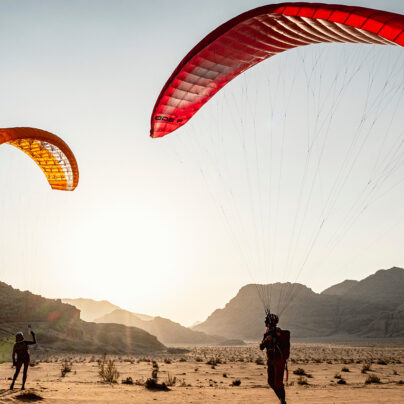Khan Tengri
Solo Expedition 2014
Ed Farrelly
The real challenge of solo expeditions is mental: knowing that if it all goes wrong there is no support, no back up, and you’re on your own. All the kit has to be moved up the mountain on your own back; the trail has to be broken by your own feet; and you have to be completely self-reliant. Soloing is not for everyone, but I have always been intrigued by it, because for me it represents the ultimate challenge in adventuring. The first big mountain expedition I ever went on was in 2010, to Kyrgyzstan: I looked up from the Inylchek Glacier to the golden summit of Khan Tengri with something approaching awe and it felt a million miles away. Heading back four years later and standing at that same spot gave me goose bumps; it was a real pleasure to know that now I had a chance to climb it.
From Bishkek, Kyrgyzstan my father and I were driven at high-speed along the shore of Lake Issyk-Kul to Karakol, in the north-east, and then into the wilderness towards Maida-Adyr heliport, via the abandoned mining town of Inylchek, now guarded by the military. Perhaps a little alarmingly, we were held up at Maida-Adyr because, two days earlier, one of the five MI-8 helicopters in the country had crashed on the slopes of Khan Tengri. The delay gave me a chance to head up into the nearby foothills and acclimatise at 4,000m. I was feeling expectedly nervous about the weeks ahead, and that acclimatisation calmed me. Gazing around at the stunning and majestic snow topped peaks, in this state of apprehension, was something I will never forget. By the time our transport flew in I was raring to go, all too aware that any days lost limited my options on the mountain.
Swooping up and along the Inylchek Glacier, Khan Tengri grew ever more present. By the time we’d reached Base camp it loomed over us, its sheer size hard to comprehend. From glacier to summit, Khan rises up almost 3,000m and, even compared to the nearby 8,000m peaks, Khan Tengri harbours a dauntingly large ascent.
I was feeling expectedly nervous about the weeks ahead, and that acclimatisation calmed me. Gazing around at the stunning and majestic snow topped peaks, in this state of apprehension, was something I will never forget
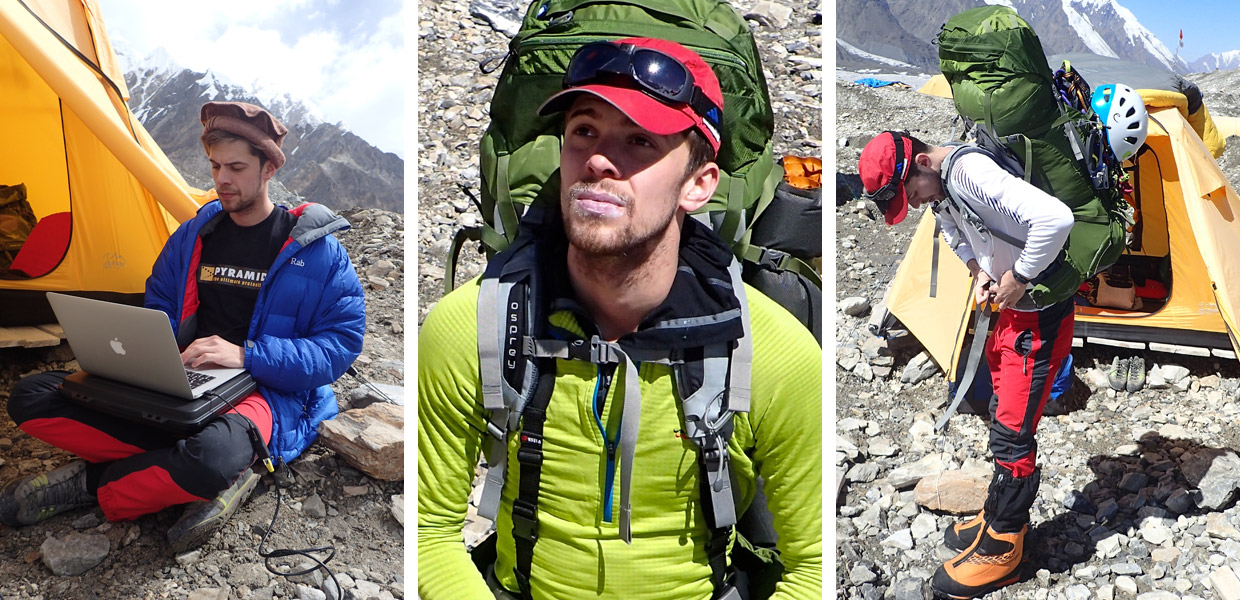
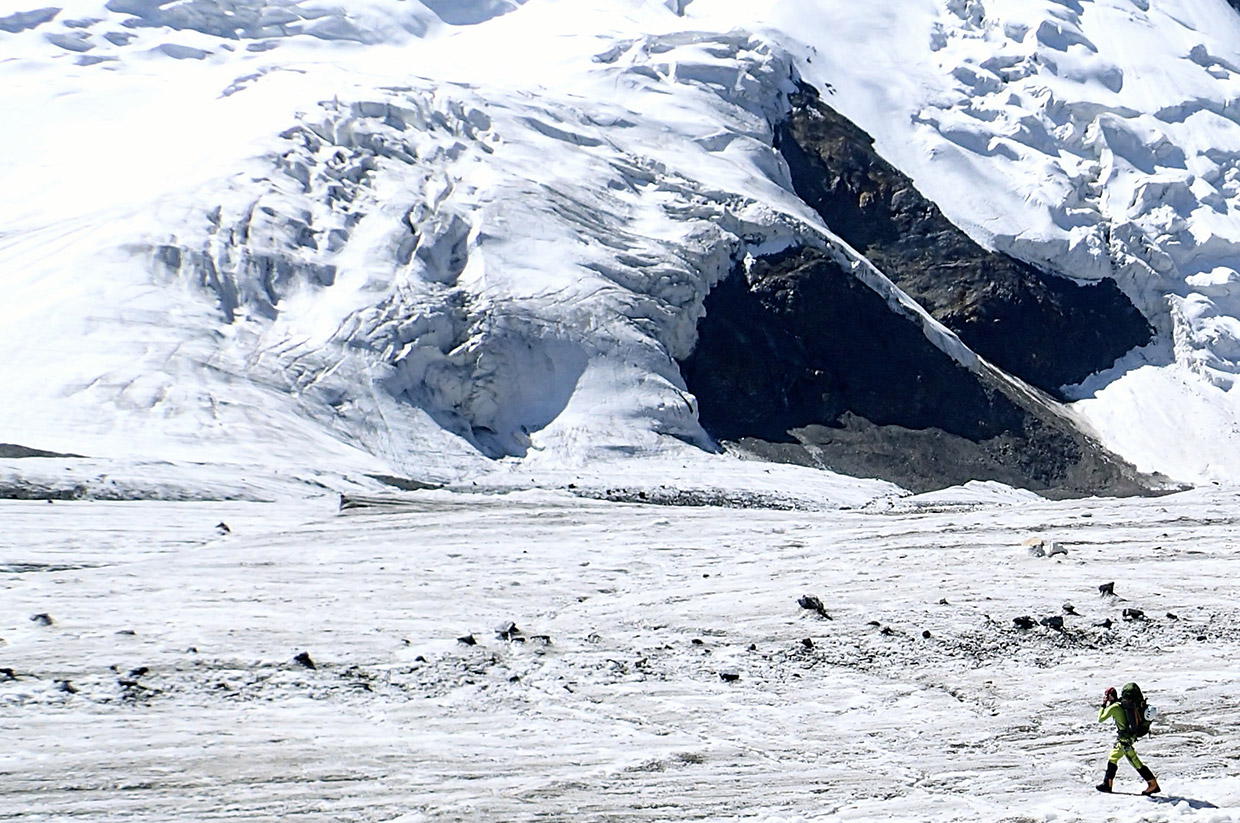
Base camp is an odd place, full of climbers either dejected or elated by what they had achieved – a place of extremes where climbers have to focus on their own challenges so as not to lose sight of it all.
I had initially planned to spend two nights at Camp II, but when I rung in on the first morning and received news of very high winds, low temperatures and snow, I made a snap decision to head back down. The problem with Khan Tengri is that moving between the glacier and Camp I takes climbers across a snow packed slope and I wanted to avoid as much avalanche risk as possible when I crossed this area.
The Tien Shan is notorious for changeable weather, but this was unusual. High winds, and extremely low temperatures at altitudes above Camp III, were predicted almost every day. The only break was a period of lower winds and heavy snowfall across the mountain, which would last a few days. At base-camp, I spent the next few days weighing my options, and picking up as much advice as I could from more experienced climbers. The Polish mountaineer, Krzystof Wielicki, who was the first man to climb Everest in winter, was particularly helpful. When it came to crunch time, I had made my decision – I would set off on my summit bid and reach Camp III in time for a forecasted 24-hour window of low winds but heavy snow. In that situation, snow is better than wind.
Packing up and leaving base-camp was an emotional moment, but I knew that this was my best shot to reach the top. Just before I left, Krzystof wished me well, and said: ‘remember, the weather comes and goes, but the mountain will always be there.’ Base camp is an odd place, full of climbers either dejected or elated by what they had achieved – a place of extremes where climbers have to focus on their own challenges so as not to lose sight of it all. I set off for Camp I, which I reached at around lunchtime. The whole way up I was thinking about the days ahead and wondering what was in store for me. Years ago I was involved in a tragic accident on Aconcagua where my teammate, Bob Huggins, passed away. It is a constant reminder to me of what can go wrong on a mountain. The next day I moved on to Camp II. Before leaving I was unsure whether the tent I’d left there on my first visit would still be standing and it was with some relief that I saw it was.
I saw teams packing up and leaving: some were licking their wounds (frostbite and failed summit attempts) whilst a couple of others had been lucky and reached the top. I heard that even those fortunate few had spent several days at Camp III getting battered by strong winds and finally managed pushing to the top by taking advantage of the small lulls in the weather – a fine line. Despite all of this, I was determined to head on to Camp III at least. Weather can always change.
The route up to Camp III has a few areas of vertical mixed rock and ice with limited safety, making it technically more difficult than anywhere else on the mountain. As soon as I left Camp II, I had to navigate a knife-like ridge with massive exposure. After five hours of moving upwards, the snow flattened ahead of me; I had reached the north summit of Peak Chapayev (6,095m). This was the first British solo of Peak Chapayev, so I allowed myself a moment of celebration as I recalled the months of preparation and hard work which had led to this point.
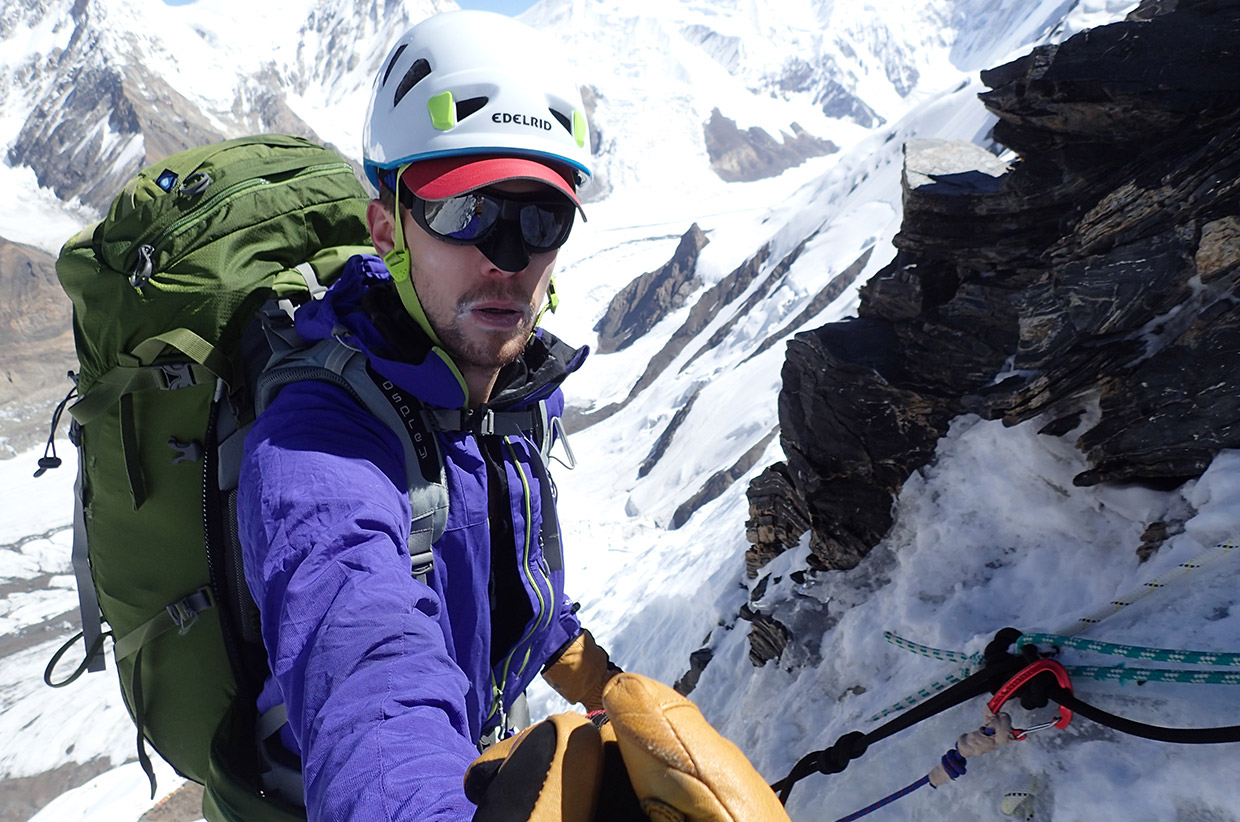
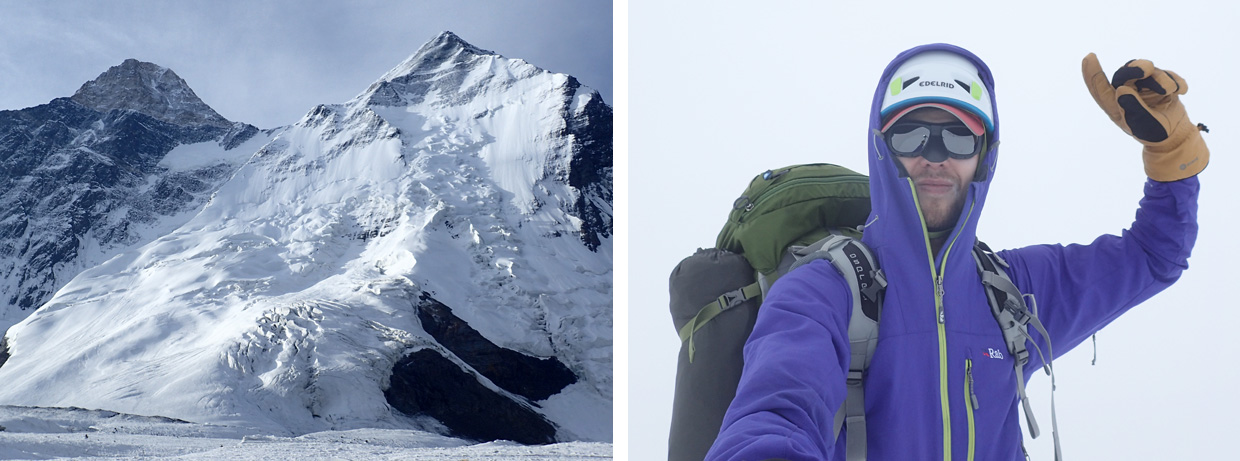
After a sleepless night, listening to the snow falling outside, the morning brought no good news. Krzystof Wielicki’s words rang in my ears and at that point nothing felt truer: the mountain would always be there. In the end, It wasn’t a difficult decision to make. I have never wanted to summit a peak more than Khan Tengri; the challenge and visible natural power that it exudes; it’s exactly why I got into mountaineering in the first place. But I had no choice, but to pack up Camp III and break a trail through the snow back up Chapayev. Moving back down to base-camp and collecting kit as I went, I knew that this was the right decision – soloing is thrilling and raw, but it also adds another layer of risk. Climbing the last section from Camp III to the summit in conditions that were less than adequate was not a risk that I was willing to take. For this year, with the season coming to a close and the precedent of poor weather set, my expedition was over.
As I crossed the final section of the Inylchek glacier to base-camp, I saw my father looking across at me with a beaming smile; I had got back safely after a long day of down-climbing and abseiling, I was so elated to see him. News came in of the tragic death of Kresimir Milas who had been avalanched into a crevasse on the South side of the Mountain; I’d been with him for a number of days at the beginning of the trip and his enthusiasm had been infectious. That evening I took a last glimpse of the cloud covered Khan Tengri and then we left base-camp by helicopter.
Website: edfarrelly.com
Twitter: @edfarrelly





